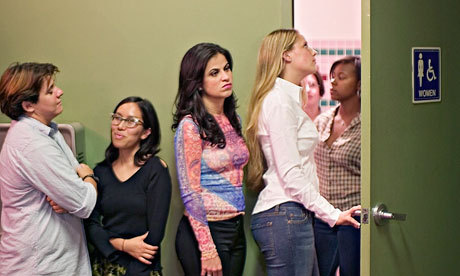
It’s a sight most women are familiar with: the dreaded long line for the bathroom. Unlike men whom seldom need to queue, a common question from women is why can’t there just be more toilets for women in a building?
In most contemporary architecture, equal space is given to bathrooms for men and women. While this sounds right, it fails to address the different gender practices inside each. Women tend to spend more time in a bathroom, and one reason is they relieve themselves in cubicles and men use urinals which are more compact in size. A men’s bathroom can accommodate more men going about their business as compared to what goes on in a women’s bathroom. So while there may be spatial parity, women find their freedom of movement constrained by the architecture within the bathrooms.
This everyday problem highlights Rendell’s discussion of how women users value spaces differently from men. The gap in how different genders experience a building highlights the (male-friendly) values and assumptions made by the architect and developer.
There has been a recent movement for “potty parity”, a call for equitable provision of washroom facilities for men and women within a public space. One solution is to create unisex toilets, while another has been to provide more bathrooms for women. In 2005, the New York City Council passed the Women’s Restroom Equity Bill, requiring all new establishments to maintain a 2:1 ratio of women’s bathroom stalls to men’s stalls and urinals.
Not only can women rejoice, but the days of men waiting for their wives and girlfriends outside the bathrooms will soon be over too.
———–
Written for Anooradha Iyer Siddiqi’s Cultural Theory class at D-Crit in response to Jane Rendell’s “Tendencies and Trajectories: Feminist Approaches in Architecture”